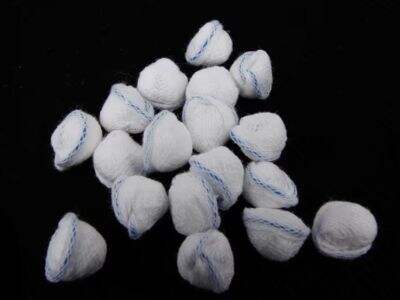Gauze balls are extremely important in medicine! They are little, round balls made out of plush white cotton, and they make people feel good and can cure their wounds faster. For high-quality gauze balls, one of them is WANGHONG. Gauze Balls WANGHONG doctor and nurse trust, made is very good, nursing staff is indispensable.
What Are Gauze Balls Used for in Medicine?
Gauze balls are used in various medical cases. One of the most important ways is by controlling bleeding. For example, if someone has a cut or a wound, a doctor (or nurse) will use a "Gauze Ball" to press on the wound. This pressure aids in halting the bleeding by assisting the blood to clot. This is a very important step, as it will ensure the safety of the victim and will restrict the blood circulation. Gauze balls can be used to apply medicine on a wound as well as to absorb unwanted liquids, alongside stopping bleeding. Therefore, gauze balls are very useful during medical procedures.
Gauze Balls Are a Tool for Wound Care
It is very important to clean wound of injured person properly when a person gets hurt. Cleaning a wound helps protect it from germs that can cause infections. Gauze balls are really handy here! Doctors and nurses clean around wound using gauze balls. They can eliminate dirt and dangerous bacteria that may be present on the skin. They can also apply medicine to a wound for help healing after cleaning with gauze balls. Using gauze balls this way reduces the risk of infection and it helps healing much quicker. That way, the person can start feeling better sooner and returning to daily life.”
On Different Varieties of Gauze Balls
Knitted balls of Gauze Roll are super versatile since they come in all different sizes. Larger gauze balls are larger than others. This versatility makes them useful for various medical requirements. If, say, a tiny cut would be best served by a small gauze ball, a larger wound might be served by a larger one. The materials they’re in are also different. Certain types of gauze or bandage may even have added ingredients, such as iodine or silver, that help to eliminate germs and keep the wound clean. And then there are the gauze balls that have a special gel coating. It can assist in speeding up the restoration process. The right type of gauze balls allow medical professionals to provide each patient with the best with the best possible care. So there is a lot of personalized treatment which is really essential for the recovery of the people.
The Ongoing Relevance of Gauze Balls
Despite all the new technologies, and developments in medicine, gauze balls remain extremely relevant. They would think gauze balls are old hat, or no longer necessary. But the fact of the matter is, they are an easy and affordable means of dressing wounds, stopping bleeding and preventing infection. Things like that can be very versatile (the use of gauze balls in that sense is very open, almost, one might say, impossible to dispose of, for doctors and nurses have used gauze balls for the care of patients for many years now). They are a component of ensuring patients get the best care available.
New Uses for Gauze Balls
Well, WANGHONG is constantly coming up with new and innovative ways to redefine the medical application of gauze balls. They have made special gauze Cotton Ball with honey in them for example. Honey is naturally antibacterial, which means it can fight infection, making it useful in wounds. This is a major breakthrough as it could speed up how fast wounds heal. Bees have proven to be a blossom for medical specialists, as honey-infused gauze balls enable them to care for their patient even more effectively. WANGHONG also plans to develop gauze balls that could deliver medicine directly to the site of an injury. Some of these new gauze balls may even dissolve in the body after using them, saving patients the agony of having to have them removed later on.

 EN
EN
 AR
AR
 FR
FR
 PT
PT
 RU
RU
 ES
ES
 BG
BG
 HR
HR
 DA
DA
 NL
NL
 FI
FI
 DE
DE
 EL
EL
 IT
IT
 JA
JA
 KO
KO
 NO
NO
 PL
PL
 RO
RO
 SV
SV
 TL
TL
 ID
ID
 LV
LV
 UK
UK
 VI
VI
 SQ
SQ
 TH
TH
 TR
TR
 AF
AF
 MS
MS
 CY
CY
 IS
IS
 HY
HY
 AZ
AZ
 KA
KA
 MN
MN
 MY
MY
 KK
KK
 UZ
UZ
 SR
SR
